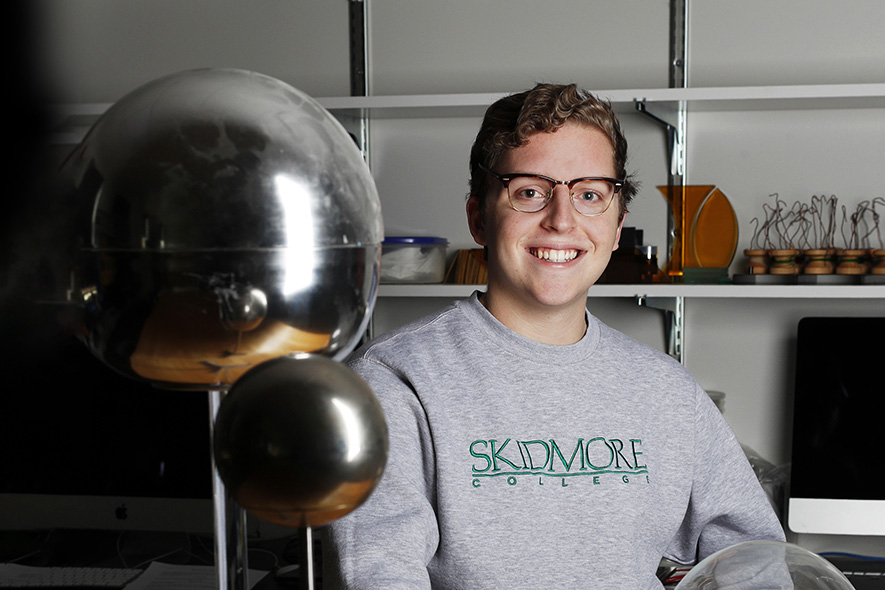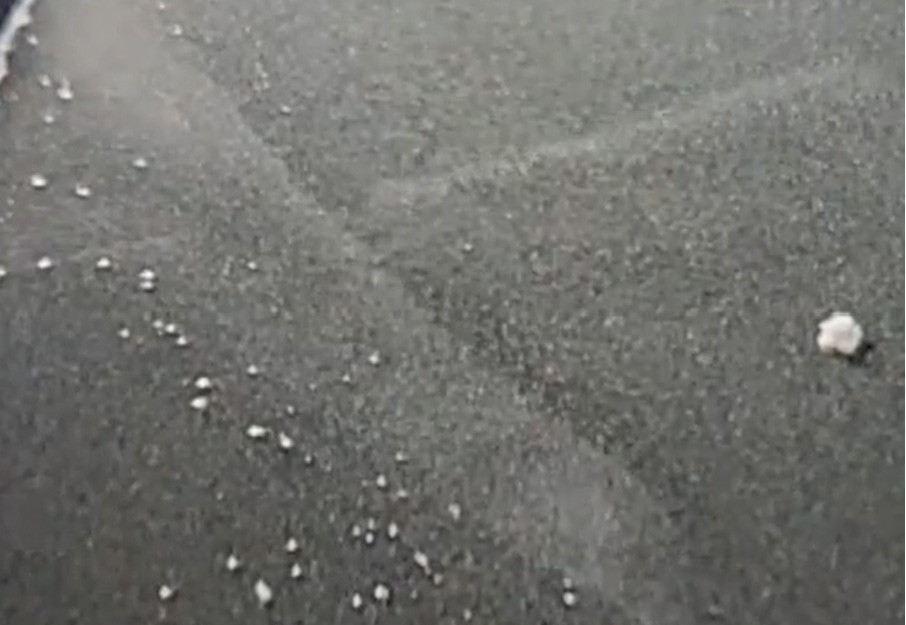Pursuing cosmic string research at a liberal arts college

Like many others, I started my college search not knowing where to look or what to look for. I knew I wanted to major in physics, but I had no idea what kinds of opportunities and resources might be the most valuable to me in the long term or where I could find them.
My solution was to be as thorough as possible, and I ended up touring a whopping 26 schools in total, ranging from large R1 (research) universities with tens of thousands of students to smaller schools with only a couple hundred students, and everything in between. The search took me to schools in New England, New York, Ohio, Minnesota, and even England.
Despite the traditional association of strong sciences with large universities, I found that the schools that aligned best with what I wanted and needed were small liberal arts colleges. They had better immediate opportunities for research and smaller class sizes. Among these, I admired Skidmore the most of all because it encourages passion-driven projects that bridge a variety of academic disciplines.
In Skidmore’s Physics Department, I found the community that I didn’t know I was looking for. Physics professors encourage collaboration which fosters a supportive environment where ideas are shared, questions welcomed, and perspectives expanded.
In addition, the academic community promotes interdisciplinary interactions, allowing physics enthusiasts to engage with students and faculty from various disciplines and broaden our intellectual horizons.
Skidmore also recognizes the importance of hands-on experiences in scientific research. Despite being a smaller school, the College offers exceptional opportunities to engage in cutting-edge research projects with accomplished faculty members. These research experiences not only enhance theoretical knowledge but also foster critical thinking, problem-solving skills, and scientific inquiry — a perfect blend for aspiring physicists like me.
One of my recent classroom experiences really enhanced my appreciation for this aspect of the academic environment. In one physics class, The Early Universe, I found myself wanting to go outside the scope of a specific class assignment. Instead of limiting me to the prompt, then Visiting Assistant Professor Jeremy Wachter encouraged me to follow my ambition, and I was able to create a small cloud chamber to observe cosmic ray interactions with subatomic particles.
Jacob Lord's cloud chamber created to observe cosmic ray interactions.
Beyond this project, I have conducted research with Professor of Physics Mary Crone Odekon and Associate Professor of Physics Kendrah Murphy on large scale galactic structures and active galactic nuclei, respectively.
However, most of my work has involved early universe cosmology, with a specific focus on cosmic strings.
In fact, I am on track to be among the first undergraduate students in the world to be published in the field of cosmic string research.
What are cosmic strings? What is early universe cosmology?
Cosmic strings are theoretical, one-dimensional strings or ring-shaped objects created after the Big Bang in the range of a few femtoseconds (10-15 seconds). As far as we know, these strings can only be observed with gravitational wave telescopes. Unfortunately, these telescopes are not yet powerful enough to observe the specific types of gravitational waves we believe cosmic strings produce.
In the meantime, I’m part of a group of researchers (from institutions ranging from Tufts University to the University of the Basque Country) working together to create hypothetical data about the types of gravitational waves produced by strings.
For those less familiar with the field of universe cosmology, imagine the many types of gravitational waves across the cosmos as a symphony orchestra; we are trying to pick out a specific instrument from the cacophony of sound made by this cosmic symphony.
Hypothesizing these waves is akin to theorizing what a trumpet may sound like to someone who has never heard one. In the future, when we are given a recording of our cosmic symphony, we can listen for a sound that lines up with our hypothetical trumpet and say with a large degree of certainty that cosmic strings exist.
A rendering of a cosmic string (courtesy of Jeremy Wachter)
My paper, which will eventually be published in a scientific journal, looks into the code that researchers have used to run cosmic string simulations and modifies it to make it more accurate by accounting for diverse cosmic string populations. I have done this by creating code that makes a histogram of the probabilities of types of strings within a population. It then evaluates a simulation we have used in the past within these new parameters.
Ultimately, what I’ve accomplished is just one small step for the physics community, but it represents a giant leap forward in our future understandings of cosmic strings. The code I have created will pave the way for future research into these fascinating wrinkles in time.
Jacob Lord ’24 is a physics major from Maynard, Massachusetts. Beyond the classroom, he hikes and skis in the local area and is an engaged Hillel member and peer health educator. He likes to unwind with a nice cup of tea from Saratoga Tea and Honey. He’s also captain of the Physics Department’s peer academic coaching team and is the department’s student representative. After graduation, he hopes to earn a Ph.D. in plasma physics and work in the field of creating renewable energy solutions using nuclear fusion.
